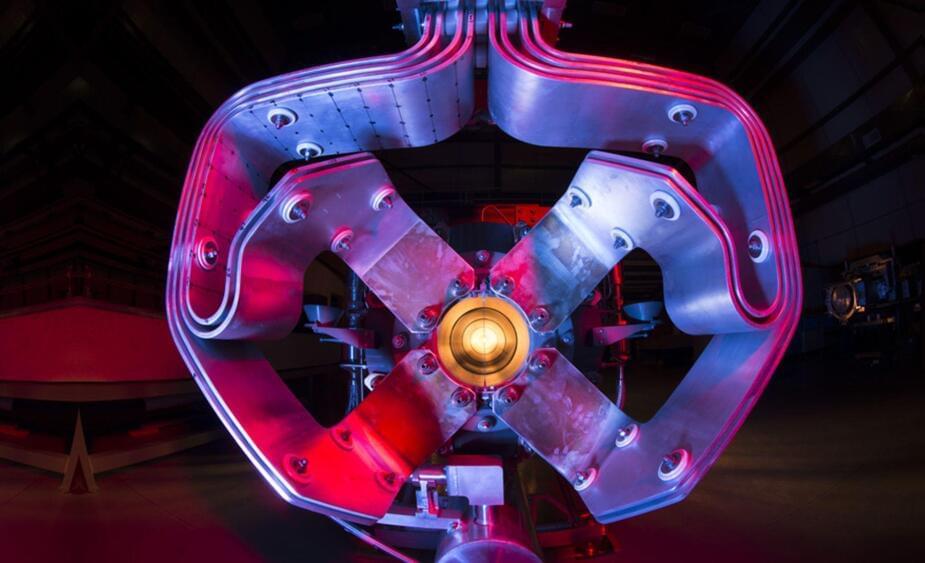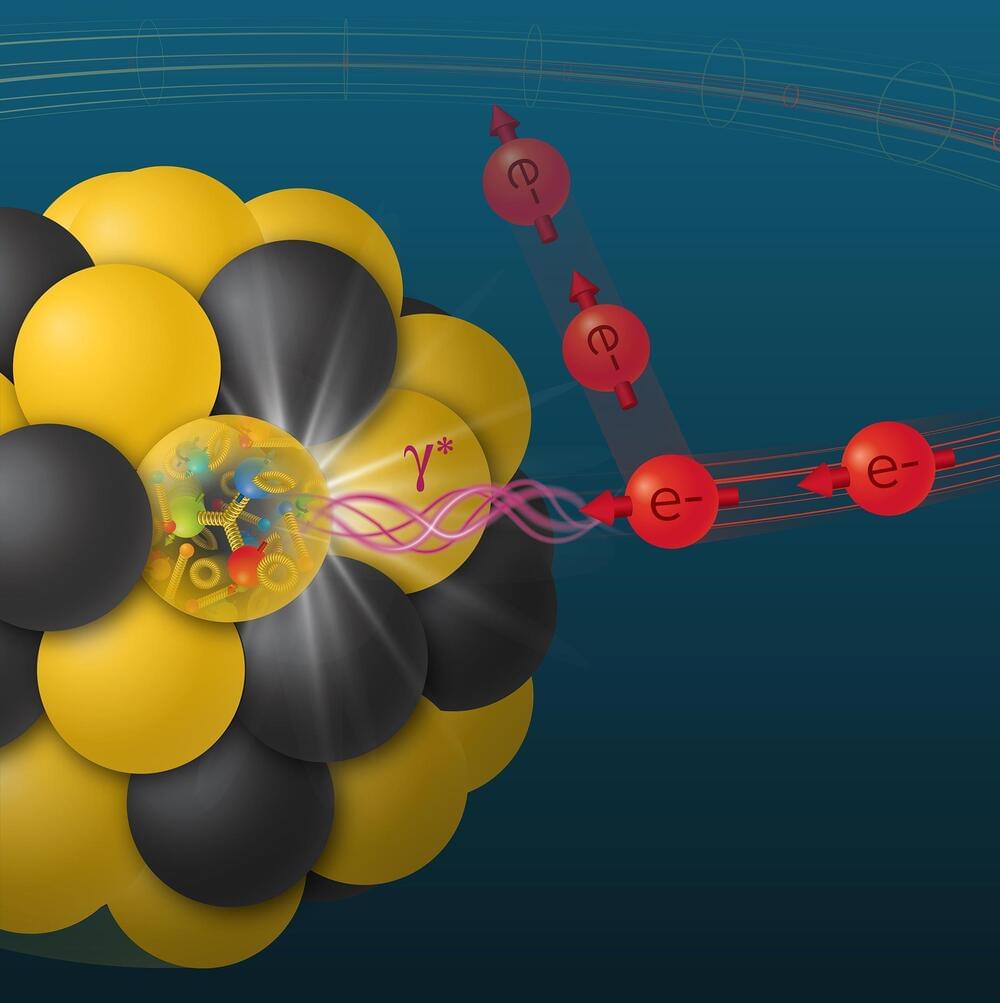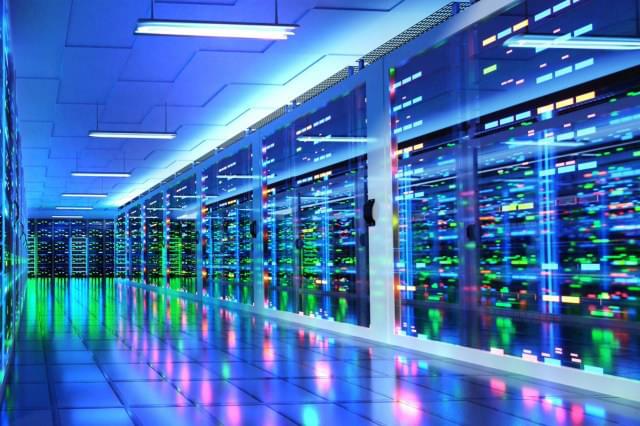The next head of Europe’s CERN physics laboratory said Thursday that he favored moving forward with plans for a giant particle collider far more powerful than the collider that discovered the famous “God particle”



Fermilab is tackling the extreme conditions generated in neutrino experiments to ensure the success of future research.
“Researchers need to overcome three challenges to make a lasting target: radiation damage, high temperatures and stress from thermal expansion,” remarked the press release.
Nanofibers, incredibly thin threads with exceptional strength and flexibility, are being investigated for their ability to better absorb the shock of the proton beam.
“A nanofiber developed by Fermilab engineer Sujit Bidhar is being researched as a potential target material due to its ability to mitigate thermal shock and be more resistant to radiation damage,” highlighted the press release.

Earlier this year, experiments shattered expectations by pushing the limits of what classical computing was believed to be capable of. Not only did the old fashioned binary technology crack a problem considered to be unique to quantum processing, it outperformed it.
Now physicists from the Flatiron Institute’s Center for Computational Quantum Physics in the US have an explanation for the feat which could help better define the boundaries between the two radically different methods of number-crunching.
The problem involves simulating the dynamics of what’s known as a transverse field Ising (TFI) model, which describes the alignment of quantum spin states between particles spread across a space.

Scientists at Brookhaven National Laboratory have used supercomputer simulations to predict electric charge distributions in mesons, essential for understanding the subatomic structure of matter.
Upcoming experiments at the Electron-Ion Collider (EIC) will further validate these predictions, offering new insights into how quarks and gluons interact to form visible matter.
Exploring Meson Charge Distribution

However, for the first time, two dark matter experiments have detected a neutrino fog, a dense cloud of neutrinos. This discovery is reported by researchers from XENON and PandaX — two scientific experiments that aim to detect dark matter, operating independently in Italy and China respectively.
“This is the first measurement of astrophysical neutrinos with a dark matter experiment,” Fei Gao, a scientist involved in the Xenon experiment, said.
Neutrinos are typically detected through coherent elastic neutrino-nucleus scattering (CEvNS), a process in which neutrinos interact with the entire nucleus rather than just a proton or electron.

Scientists claim that experimental studies of Higgs boson interactions face a fundamental challenge.
Scientists believe that interactions between Higgs bosons could unlock insights into new physics. Discovered at CERN’s Large Hadron Collider (LHC) in 2012, the elusive Higgs boson particle has been at the centre stage for exploring new possibilities in particle physics.
Scientists claimed that the production of Higgs boson pairs can occur within the Standard Model itself. It is such a rare process here that it has not been possible to observe it in the data collected so far.
In a groundbreaking study published in Nature, scientists from JILA—a partnership between the National Institute of Standards and Technology and the University of Colorado Boulder—have managed to measure time dilation at an unprecedentedly small scale. This breakthrough involved detecting time differences between two clocks spaced only a millimeter apart, a distance as small as the width of a pencil tip. The experiment marks a major step forward in the precision of atomic clocks and sheds new light on the effects of gravity on time as outlined in Albert Einstein’s theory of general relativity.
Clocks that Measure the Effects of Gravity at the Millimeter Scale
Time dilation, a phenomenon where time moves more slowly in strong gravitational fields or at high speeds, was first predicted by Einstein’s relativity theory. JILA researchers, led by physicist Jun Ye, used highly precise atomic clocks in this experiment to measure these differences in gravitational time dilation over millimeter distances. By tracking frequency shifts among a sample of 100,000 ultra-cold strontium atoms held in a lattice, the team achieved a remarkable level of control, detecting how the gravitational pull from Earth slightly altered the passage of time over even this small distance.
During the time you read this article, something will happen in the sky that many scientists didn’t believe would happen until recently. NASA says that a magnetic doorway will open that will connect the Earth and the Sun, which are 150 million kilometers apart.
Hundreds of thousands of high-energy particles will pass through this gap until it closes, which will happen about the time you reach the bottom of the page.
NASA’s Goddard Space Flight Center’s space physicist David Seebeck calls it a “flux transfer event” or “FTE.” “In 1998, I was sure they didn’t exist, but the proof is now clear.” In fact, David Seebeck proved their existence in 2008 at a plasma conference in Huntsville, Alabama, when he told a group of space physicists from all over the world about his research.

Advancements in nuclear physics suggest the possibility of discovering stable, superheavy elements.
Researchers have found an alternative way to produce atoms of the superheavy element livermorium. The new method opens up the possibility of creating another element that could be the heaviest in the world so far: number 120.
The search for new elements is driven by the goal of finding versions that are stable enough to exist beyond a fleeting moment. In nuclear physics, there is a concept known as the “island of stability”—a hypothetical region in the upper reaches of the periodic table where as-yet-undiscovered superheavy elements could potentially last longer than just a few seconds. Scientists are working to explore how far the stability of atomic nuclei can extend.

Electrons spin even without an electric charge and this motion in condensed matter constitutes spin current, which is attracting a great deal of attention for next-generation technology such as memory devices. An Osaka Metropolitan University-led research group has been able to gain further insight into this important topic in the field of spintronics.